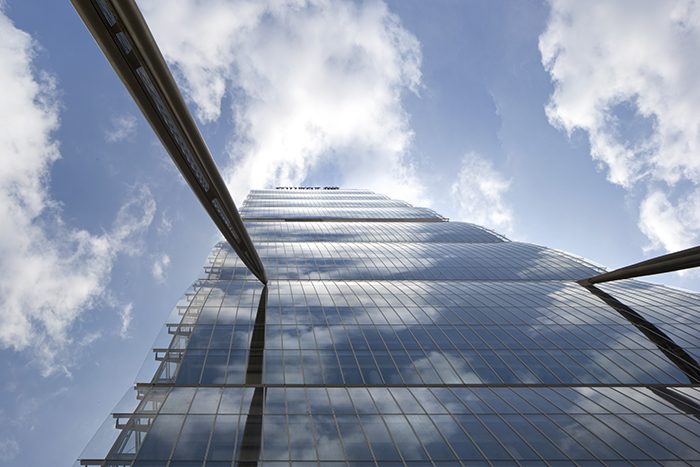
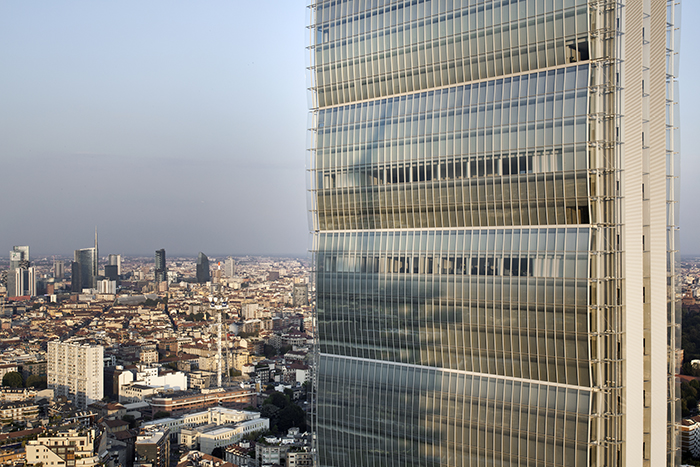
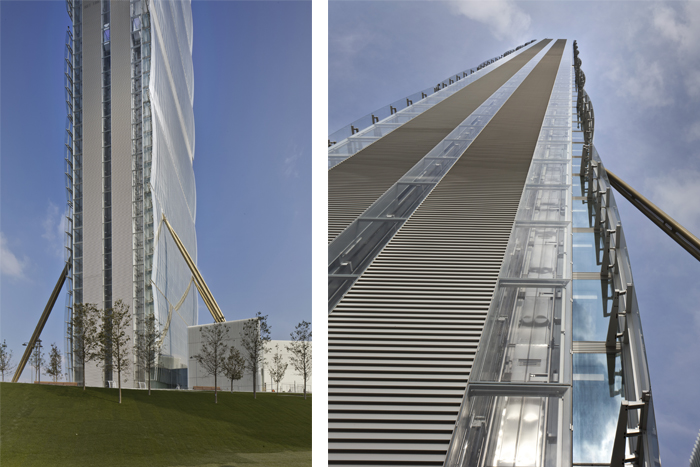
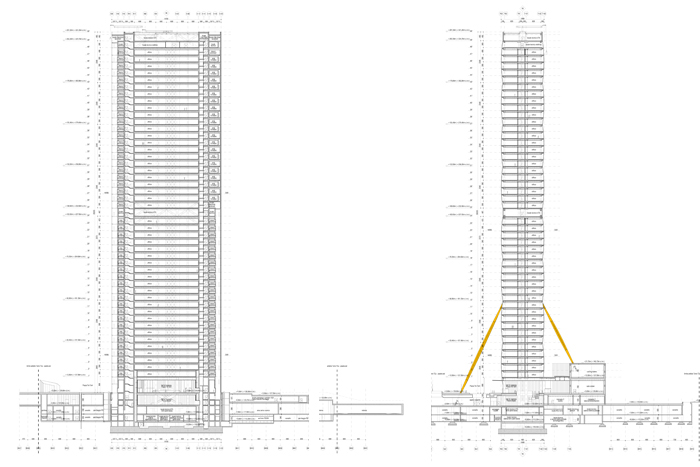
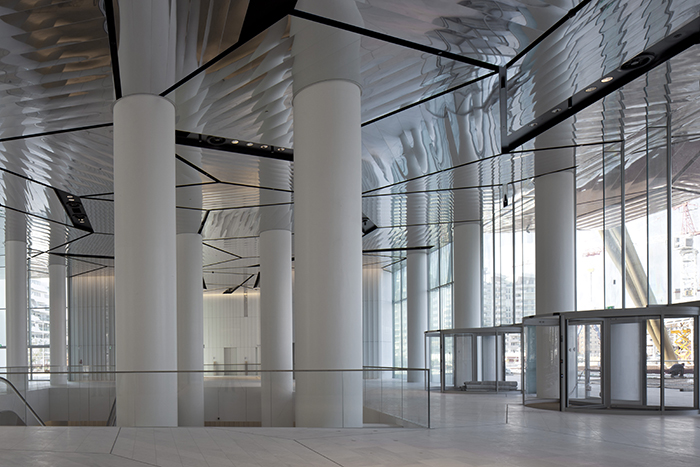
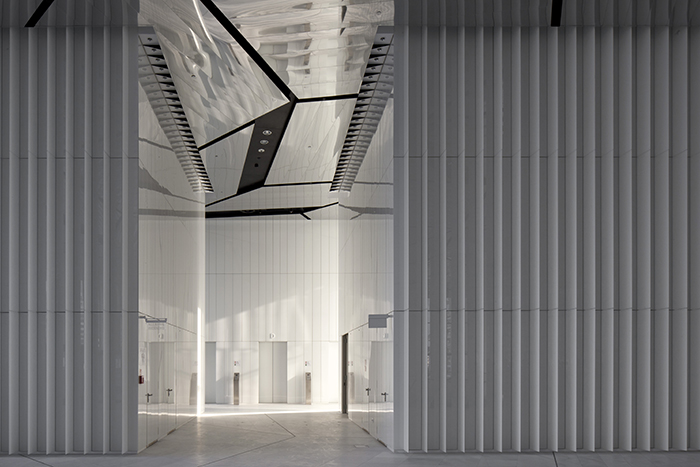
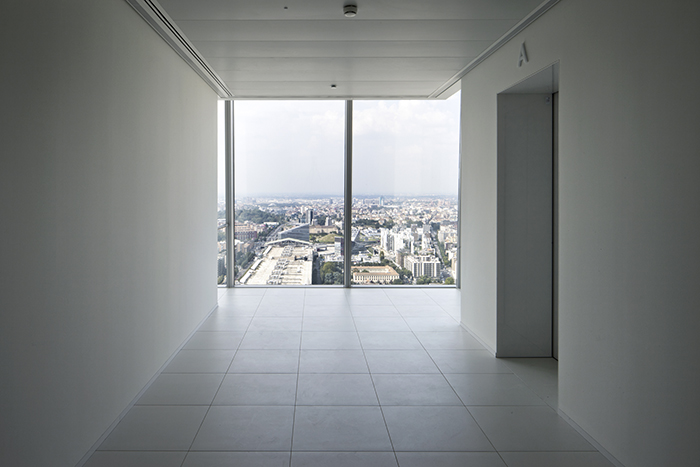
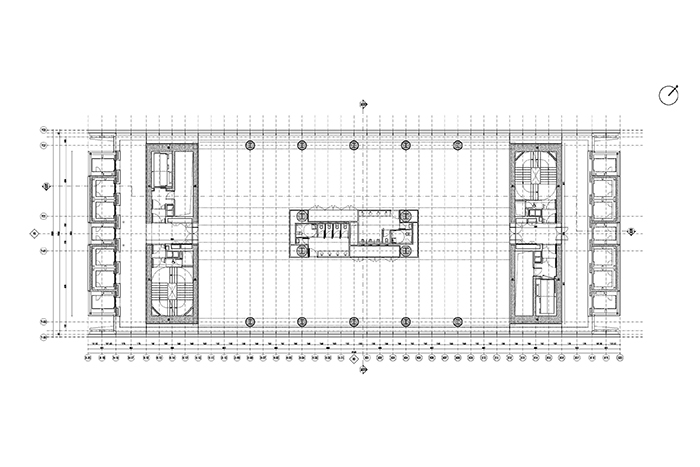
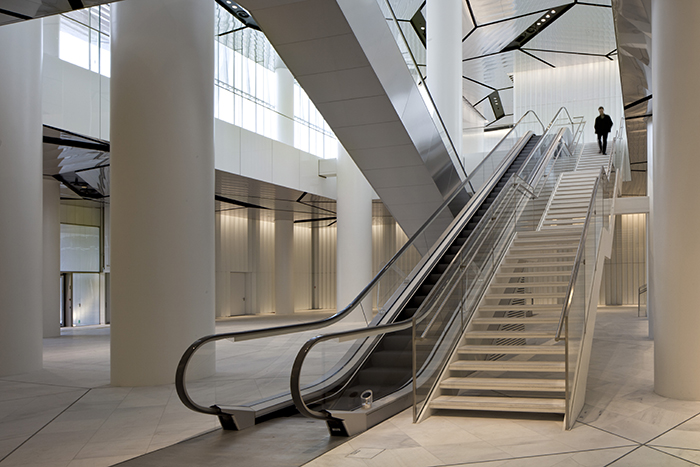
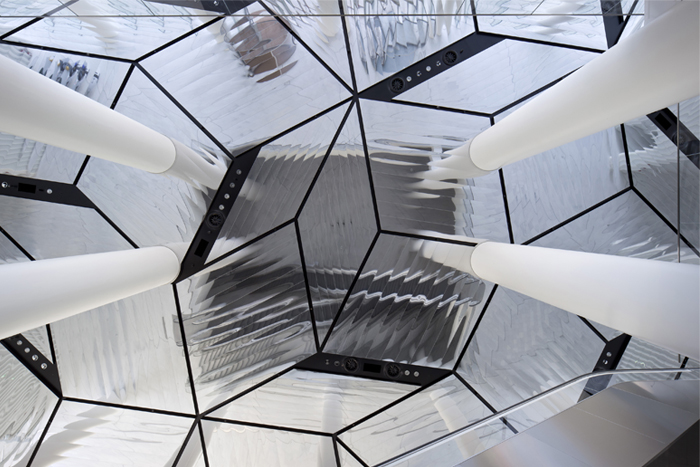
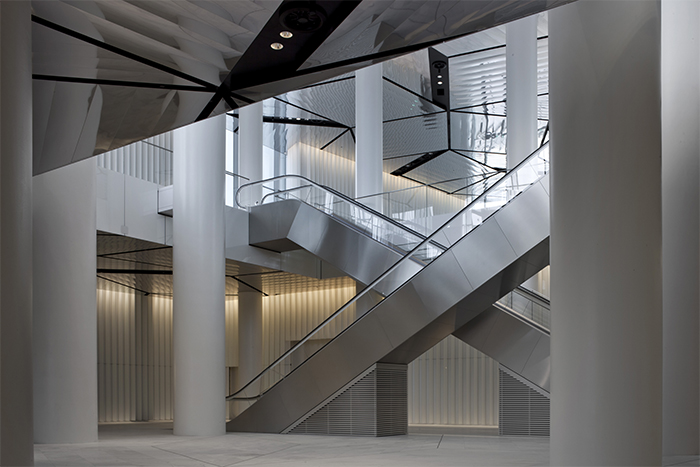
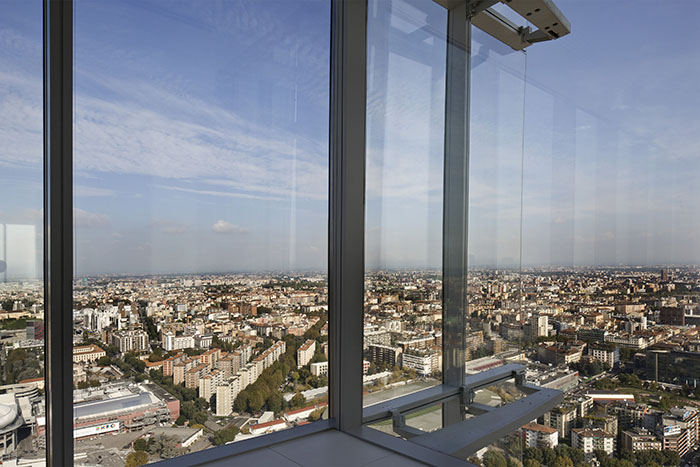
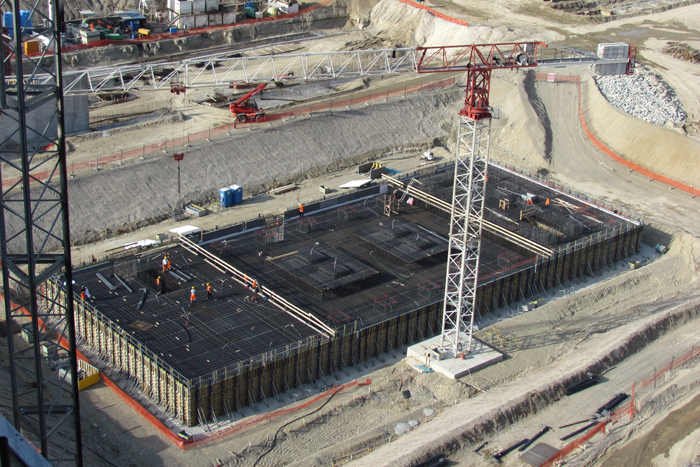
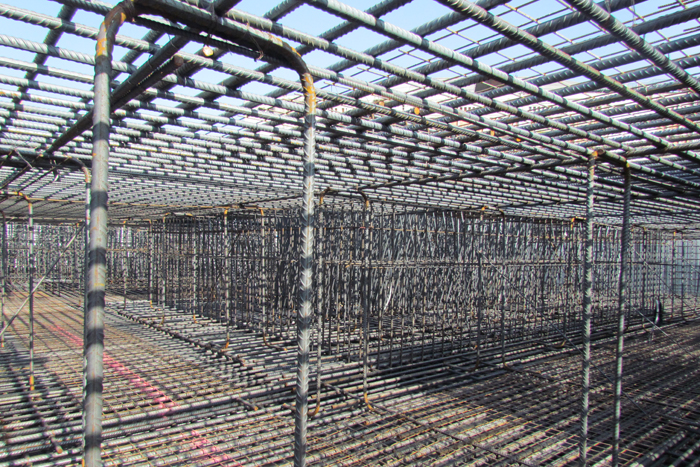
Allianz Skyscraper Milano
Project
Skyscraper ALLIANZ
Location
Milano
program
office skyscraper
client
Citylife s.r.l.
competition
2004
design
2005-2011
end of construction
2015
project
Arata Isozaki, Andrea Maffei
design team
Pietro Bertozzi, Takeshi Miura, Alessandra DeStefani, Chiara Zandri, Davide Cazzaniga, Vincenzo Carapellese, Roberto Balduzzi, Francesca Chezzi ,Takatoshi Oki, Stefano Bergagna, Giuliano Godoli, Christophe Colombo,Paolo Evolvi, Elisabetta Borgiotti, Adolfo Berardozzi, Sofia Bedinsky, Atsuko Suzuki, Antonietta Bavaro, Carlotta Maranesi, Higaki Seisuke, Hidenari Arai
structure
Maurizio Teora (PD), Luca Buzzoni (PM) / Arup Italia s.r.l., Milano
facades
Mikkel Kragh, Mauricio Cardenas, Matteo Orlandi, Maria Meizoso, Carlos Prada / Arup Italia s.r.l.
plants
Gianfranco Ariatta, Roberto Menghini, Riccardo Lucchese, Andrea Ambrosi / Ariatta Ingegneria dei sistemi s.r.l., Milano
fire consultant
ing. Salvatore Mistretta, Milano
lift consultant
Jappsen Ingenieure, Francoforte
cradle consultant
Jappsen Ingenieure, Francoforte
lighting design
LPA – Light Planners Associates, Tokyo
project management
Giorgio Montagna, Valentina Guagenti, Francesca Milani J&A, Milano|Alberto Ferrari, Pietro Baccarelli Ramboll, Londra
Gross floor area
81.615 mq.
SLP
42.070 mq.
Gross surface underground
44.485 mq.
height above ground
242 m
materials
concrete, steel, glass
Project
Skyscraper ALLIANZ
Location
Milano
program
office skyscraper
client
Citylife s.r.l.
competition
2004
design
2005-2011
end of construction
2015
project
Arata Isozaki, Andrea Maffei
design team
Pietro Bertozzi, Takeshi Miura, Alessandra DeStefani, Chiara Zandri, Davide Cazzaniga, Vincenzo Carapellese, Roberto Balduzzi, Francesca Chezzi ,Takatoshi Oki, Stefano Bergagna, Giuliano Godoli, Christophe Colombo,Paolo Evolvi, Elisabetta Borgiotti, Adolfo Berardozzi, Sofia Bedinsky, Atsuko Suzuki, Antonietta Bavaro, Carlotta Maranesi, Higaki Seisuke, Hidenari Arai
structure
Maurizio Teora (PD), Luca Buzzoni (PM) / Arup Italia s.r.l., Milano
facades
Mikkel Kragh, Mauricio Cardenas, Matteo Orlandi, Maria Meizoso, Carlos Prada / Arup Italia s.r.l.
plants
Gianfranco Ariatta, Roberto Menghini, Riccardo Lucchese, Andrea Ambrosi / Ariatta Ingegneria dei sistemi s.r.l., Milano
fire consultant
ing. Salvatore Mistretta, Milano
lift consultant
Jappsen Ingenieure, Francoforte
cradle consultant
Jappsen Ingenieure, Francoforte
lighting design
LPA – Light Planners Associates, Tokyo
project management
Giorgio Montagna, Valentina Guagenti, Francesca Milani J&A, Milano|Alberto Ferrari, Pietro Baccarelli Ramboll, Londra
Gross floor area
81.615 mq.
SLP
42.070 mq.
Gross surface underground
44.485 mq.
height above ground
242 m
materials
concrete, steel, glass
25/09/11 – Il Giornale – “Lo studio dove è nata la torre più alta che cambierà Milano”
04/12/11 – Corriere della Sera Domenica – La Lettura
20/02/12 – Il Sole 24 Ore – Generali compra grattacielo
25/09/11 – Il Giornale – “Lo studio dove è nata la torre più alta che cambierà Milano”
04/12/11 – Corriere della Sera Domenica – La Lettura
20/02/12 – Il Sole 24 Ore – Generali compra grattacielo
Allianz Tower
Milan is the city that best represents the international face of Italy, comparable to London, Frankfurt, Paris. Unlike many historical Italian cities, Milan is more related to its development in the nineteenth and twentieth century, to be more precise after the industrial revolution. In this sense, design in Milan is compared with the more contemporary face of Italy, made up of factories, subways, concrete and steel and not so much of particular historical preseces. Witness is the fact that the Futurist movement has developed mainly in Milan, a movement created to respond to the issues of the contemporary city. It was not a particularly important relationship with the large existing masterpieces, but rather a reflection on the themes of the contemporary city.
To develop the project, we immediately thought it was not interesting to rely on a single architect for the design of the whole complex, but to start a dialogue. Due to the size of the area we decided to aspire to re-interpret the complexity of the city through many architects who brought the idea of buildings with different shapes and materials. In any street in Milan there are buildings from different periods and with different architectural features. From this belongs the life of a city, in the dynamic tension between the works of later periods in an archipelago of images and colors. This was our ambition, choosing to work in a group. In our archipelago forms, we found interesting to develop the idea of a skyscraper without a limit, a kind of endless tower. Now we find skyscrapers of any shape and decoration in all parts of the world. Starting from this study, we looked to a fascinating concept to be applied to high-rise buildings, instead of studying only a shape of an aesthetic beauty.
In the aspiration of maximum verticality and tension towards the sky, it was a limit to choose a complete shape and concluded at a certain height and we preferred to apply the concept of a modular system that can be repeated in an infinite way with any limit.
The module we decided is composed by 6 office floors with a long thin plan of 24×61.5m. The choice of these proportions is finalised to make the whole volume thinner to emphasize the verticality and makes it structurally provocative, due to the slender shape so high.
The facade of the module is composed by a triple glass unit slightly curved to outside. The vertical succession of rounded forms create a feeling of slight vibration of the volume of the building as it rises upward. Elevations of the short sides are fully glazed and show the mechanical series of panoramic lifts going up and down to the various floors of the building.
The idea of endless tower can be compared to previous ambitions of other artists as Constantin Brancusi, for example, who in 1937-38 installed one of his endless column of Targu-Jiu in the park to create repeatable systems indefinitely. When asked about the reasons for this idea, Brancusi replied: “We need to support the vault of heaven.”
Allianz Tower
Milan is the city that best represents the international face of Italy, comparable to London, Frankfurt, Paris. Unlike many historical Italian cities, Milan is more related to its development in the nineteenth and twentieth century, to be more precise after the industrial revolution. In this sense, design in Milan is compared with the more contemporary face of Italy, made up of factories, subways, concrete and steel and not so much of particular historical preseces. Witness is the fact that the Futurist movement has developed mainly in Milan, a movement created to respond to the issues of the contemporary city. It was not a particularly important relationship with the large existing masterpieces, but rather a reflection on the themes of the contemporary city.
To develop the project, we immediately thought it was not interesting to rely on a single architect for the design of the whole complex, but to start a dialogue. Due to the size of the area we decided to aspire to re-interpret the complexity of the city through many architects who brought the idea of buildings with different shapes and materials. In any street in Milan there are buildings from different periods and with different architectural features. From this belongs the life of a city, in the dynamic tension between the works of later periods in an archipelago of images and colors. This was our ambition, choosing to work in a group. In our archipelago forms, we found interesting to develop the idea of a skyscraper without a limit, a kind of endless tower. Now we find skyscrapers of any shape and decoration in all parts of the world. Starting from this study, we looked to a fascinating concept to be applied to high-rise buildings, instead of studying only a shape of an aesthetic beauty.
In the aspiration of maximum verticality and tension towards the sky, it was a limit to choose a complete shape and concluded at a certain height and we preferred to apply the concept of a modular system that can be repeated in an infinite way with any limit.
The module we decided is composed by 6 office floors with a long thin plan of 24×61.5m. The choice of these proportions is finalised to make the whole volume thinner to emphasize the verticality and makes it structurally provocative, due to the slender shape so high.
The facade of the module is composed by a triple glass unit slightly curved to outside. The vertical succession of rounded forms create a feeling of slight vibration of the volume of the building as it rises upward. Elevations of the short sides are fully glazed and show the mechanical series of panoramic lifts going up and down to the various floors of the building.
The idea of endless tower can be compared to previous ambitions of other artists as Constantin Brancusi, for example, who in 1937-38 installed one of his endless column of Targu-Jiu in the park to create repeatable systems indefinitely. When asked about the reasons for this idea, Brancusi replied: “We need to support the vault of heaven.”






